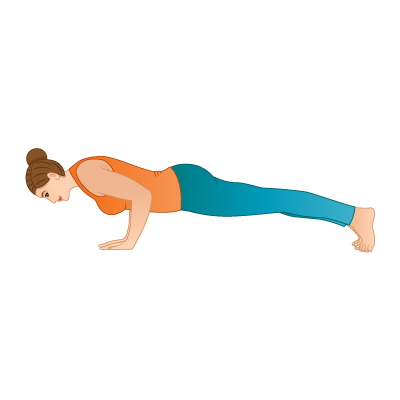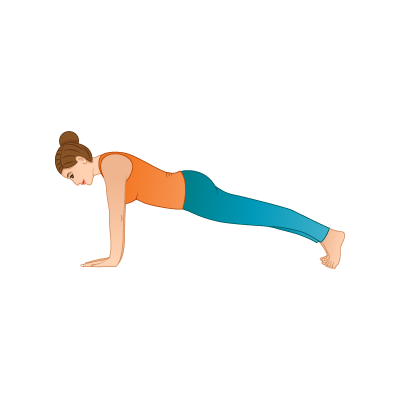Samadhi Pada and Sadhana Pada: What Patanjali teaches us in Yoga Sutras
March 15, 2023 | 12 min read
Samadhi and Sadhana Pada are the first two parts of the four-part Yoga Sutras, written by the ancient Indian sage Patanjali sometime between 100 BCE and 500 CE. The Yoga Sutras by Patanjali are considered one of the most important texts in yoga history. The book offers guidelines on how to live a more meaningful and purposeful life.
Patanjali’s Yoga Sutras
Patanjali’s Yoga Sutras consist of 196 sentences (threads, aphorisms) that reveal the first complete system of the yoga philosophy, thus marking the start of the classical period in yoga.
In one of our previous blog posts, we explored Patanjali’s ethical guidelines in yoga philosophy – Yamas and Niyamas. We focused on Ahimsa, non-violence, and how to apply ahimsa or non-violence in our yoga practice and class teaching.
Today, we take a broader look at Patanjali’s knowledge, and explore the books of Samadhi and Sadhana Pada to deepen our knowledge of what is yoga, how should we practice yoga, and what can we attain by practicing yoga.
It is of utmost importance to remember that Patanjali’s methodology is pragmatic rather than dogmatic. Yoga Sutras should be put into practice and experienced first-hand, rather than just accepting it or believing because someone said it is so.
Patanjali’s Yoga Sutras consist of four books or Padas: Samadhi (contemplation, enlightenment), Sadhana (practice), Vibhuti (accomplishments, manifestations), and Kaivalya (absoluteness, liberation) Pada. In this blog post, our focus is on the first two books: Samadhi and Sadhana Pada.
Samadhi Pada: Now the discipline of yoga begins
Samadhi Pada starts with the definition of yoga. Yoga is (being in) the present moment, an internal knowledge beyond our minds that only exists now. Yoga is the restraint of the modifications of the mind-stuff. When this is done, then the Self abides in its own nature.
The “mind-stuff” here does not apply only to the mind but is a broader term that includes the intellect and the ego, too. The nature of our mind and the world we live in is to look outside because of our senses. This is why it is of utmost importance to look within. The “Self” stands for, we could say, pure consciousness – we should not replace it with something personal. This wisdom concludes the first 3 of 51 sutras in Samadhi Pada.
Onwards, Patanjali defines five mental (mind-stuff) modifications: right knowledge, misconception, verbal delusion, sleep, and memory. Those mental modifications are either harmful or harmless and are restrained by practice and non-attachment. We might define this as the central point of Samadhi Pada. Practice is essential to experience yoga, and there is no reaching higher states of consciousness without stopping to crave possessions.
Patanjali says that practice is an effort toward the steadiness of the mind. The practice should be a regular activity that is attended for a long time, with full attention. In Ashtanga yoga, there is a concept inspired by Yoga Sutras called Tristhana – the three places of one’s attention: Bandha (posture, energy locks), Ujjayi (stable, sound, free breath), and Drishti (gaze points). Tristhana affects and purifies one’s body (bandhas), mind (dristhi), and nervous system (breath).
Non-attachment can be defined as the consciousness of self-mastery in one who is free from craving for objects seen or heard. Patanjali also describes a supreme non-attachment, which happens when there is no thirst even for the gunas, or constituents of nature: sattva (consciousness), rajas (activity), and tamas (stability).
Samadhi, to perfectly put our self in front of the Self
What can stand on our way toward Samadhi? Patanjali talks about distractions and obstacles such as disease, dullness, doubt, carelessness, laziness, sensuality, false perception, failure to reach the firm ground, and slipping from the ground gained. Those obstacles act more or less like a chain, and it all starts with a physical disease. If our body is the seat of the soul, we should give our best to keep it healthy.
Patanjali goes much deeper into such topics in Samadhi Pada, and there is an excellent commentary on Yoga Sutras by Sri Swami Satchidananda, which I highly recommend.
Sadhana Pada: Asana is a steady, comfortable posture
In Sadhana Pada, Patanjali talks about the practice of yoga. The book could be described as a practical guide on how to walk the path toward seedless samadhi, the highest experience. This is not an easy path, and Sadhana Pada is here to encourage and prepare us by laying the proper foundation and gradually upgrading our practice until that highest level is reached.
Patanjali’s Kriya Yoga as described in Yoga Sutras
Patanjali defines Kriya yoga as “accepting pain as help for purification, study of spiritual books and surrender to the Supreme Being”, which constitutes yoga in practice or in action. Sanskrit words used here are tapas (effort or self-discipline), svadyaya (study that concerns the true Self), and Isvarapranidhana (surrender to the Supreme Being). Kriya yoga helps us to minimize obstacles on our path and to attain samadhi.
Five obstacles (or Klesas in Sanskrit) that Patanjali mentions are ignorance, egoism, attachment, hatred, and clinging to bodily life. Please note that the order of obstacles is also important – and they can be destroyed by working on our ego and by meditation.
Those Klesas (obstacles) are also the root of Karma(s), where karmas can bring experiences in the present or in the future (births). The term “karma” has two meanings: “action” and/or “the result of action”. By doing karma, we reap karma. In reality, nothing is wrong in this world – but the three gunas (sattva, rajas, tamas) are forever tossing the mind. Once we learn to approach the world with selfless motives, we see the world with different eyes and purpose.
In the next ten sutras, Patanjali continues with a talk about Purusha (Seer) and Prakriti (Seen). Due to the more philosophical nature of those sutras, I recommend reading Sri Swami Satchidananda’s thoughts, and for us to move on to the Ashtanga Yoga: The eight-limbed yoga definition.
Ashtanga Yoga: The eight limbs of yoga
“By the practice of the limbs of Yoga, the impurities dwindle away and there dawns the light of wisdom, leading to discriminative discernment.”
Here Patanjali describes his idea of yoga practice through eight limbs or stages. Those sutras are also called Ashtanga (eight-limbed) yoga. The eight limbs of yoga are Yama (abstinence), Niyama (observance), Asana (posture practice), Pranayama (breath control), Pratyahara (sense withdrawal), Dharana (concentration), Dhyana (meditation), and Samadhi (contemplation, superconscious state).
We talk about Yamas and Niyamas (and their subcategories) in more detail in our How to Incorporate Ahimsa Into Yoga Practice and Class Teaching blog post.
Asana is a steady, comfortable posture
Asana means yoga posture or yoga pose. The yoga posture we are performing should be steady and comfortable. It might sound both easy and challenging – and this is true. Unless our bodies are completely healthy, we will feel tension and stiffness while doing yoga or during our daily life.
This is exactly why Hatha yoga was created – to help us get rid of tension, stiffness, pain, bile, and gas. Yogis and sages were thinking about the toxins in our bodies and how to get rid of them. There were two obstacles to be solved. First, we should strive to prevent the introduction of new toxins into our bodies. Second, we should strive to get rid of the toxins already in our bodies.
To prevent the introduction of new toxins, they developed a yogic diet to find the ideal food, amount, and time to eat.
However, the toxins in the body should somehow be removed from it, since they are already a part of the body’s system. Yogis concluded that the best way to do this is to move and squeeze the body in all directions. This is how the first asanas and satkriyas were developed. Today, we are still doing Hatha yoga to do the same.
Sri Swami Satchidananda mentions the following asanas in his commentary on Patanjali’s Yoga Sutras:
1. Pascimottanasana
Cleans the liver, spleen, and intestines.
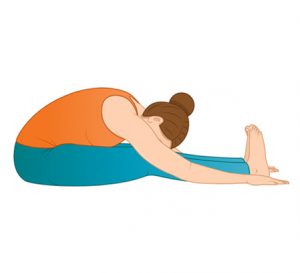
2. Yoga Mudra
When Pascimottanasana isn’t enough. 🙂
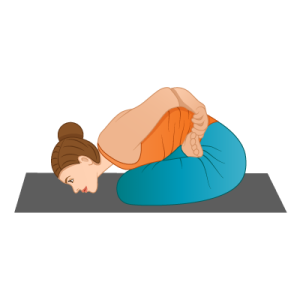
3. Mayurasana
One of the oldest non-seated asanas.
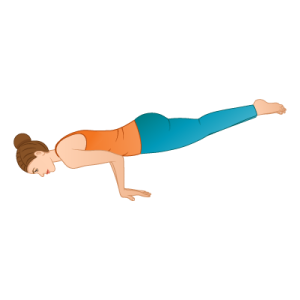
Sadhana, that by which something is performed
How is the posture mastered, you might ask? By lessening the natural tendency for restlessness and by meditating on the infinite. Meditation also helps with achieving steadiness. It is easier to make the mind still if the body is still. If you sit in one position for a long time, the mind should come under your control automatically per Patanjali. Forward bend postures seem like a perfect start to the practice.
1. Forward bends lengthen the spine and reduce back pain
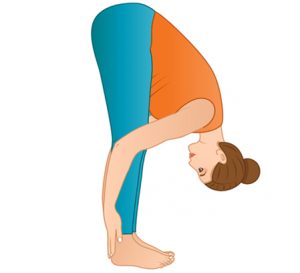
Forward bends postures or asanas have a positive effect on our physical bodies. First, they lengthen our spine and with each breath should create more space within it. This helps us to improve our posture and stand taller after a long day of sitting. Forward bends build flexibility and strength of the spine, as well as release tension in the lower back, upper back, and neck.
2. Forward bends improve digestion and boost metabolism
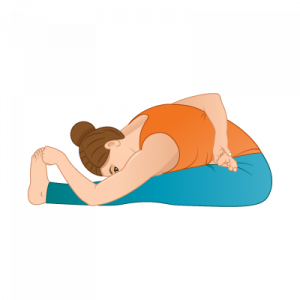
Forward bends help us to improve digestion and stimulate metabolism by increasing circulation to the abdominal organs such as the pancreas, spleen, liver, kidneys, and intestines. Forward bends, especially sitting forward bends should help our digestive system and organs with a gentle massage. Standing forward bends such as Uttanasana may help in relieving digestive ailments such as constipation.
3. Forward bends calm the nervous system
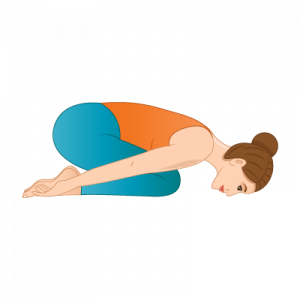
Forward bends also have a calming effect on the nervous system and brain. They relieve stress and anxiety by slightly increasing the blood pressure toward the head. In comparison to back-bends that activate the nervous system, forward-bends give us a soothing effect and calm us down. When our head is below our heart, fresh oxygenated blood is able to rush to our head and rejuvenate us.
Pranayama and Pratyahara
The last seven sutras of Sadhana Pada talk about the fourth and fifth limbs of yoga: Pranayama (breath control) and Pratyahara (withdrawal of senses).
Once the firm posture is acquired, the movements of inhalation and exhalation should be controlled. This is pranayama, a term that is hard to define in a sentence or two, but it could be translated as a “conscious control of breathing activity”.
Patanjali describes the modifications of a life-breath as either external, internal, or stationary. Those modifications should be regulated by space, time, and number – and are either long or short. There is also a fourth kind of pranayama for Patanjail, the one which occurs during concentration on an internal or external object.
Although the roots of pranayama go back to Vedic times, the first book that explored pranayama in more detail was Hatha Yoga Pradipika (or Hathapradipika), a 15th-century Indian Sanskrit text on Hatha yoga, written by an ancient Indian sage Svatmarama. In the book, one of four lessons focuses on satkriyas (purification techniques) and pranayama (breathing techniques). As a result of pranayama, the veil over the inner Light is destroyed and the mind becomes fit for concentration.
This wisdom concludes Sadhana Pada, the second of four Yoga Sutra books. To read full commentary on Patanjali’s Yoga Sutras, including Vibhuti Pada and Kaivalya Pada, I recommend considering Sri Swami Satchidananda’s translation and commentary.
Looking for more inspiration for your next yoga class? YogaClassPlan sequence builder gives you access to 7000+ shared class plans in your hands. You can create your own completely new class sequences by choosing from 500+ pose illustrations. Simply drag and drop poses to create your routine, add class plan details such as duration and level, and share the class plan with your students. Sign-up for a 15-day YogaClassPlan free trial today.
About the author:
I’m Matija, a seasoned digital marketing professional working in the industry since 2011. I hold a master’s degree in information technology, blending technical expertise with marketing finesse. I’m also a certified yoga teacher with a passion for mindfulness. I’ve been practicing yoga since 2013 and started teaching in 2022. This unique combination of skills reflects my commitment to holistic growth and helping others achieve their goals. Explore my insights on digital marketing and the transformative power of yoga in my blog posts on YogaClassPlan.
Photo by Zoltan Tasi on Unsplash
Posted in Spirituality, Teaching Resources, Teaching Tips
